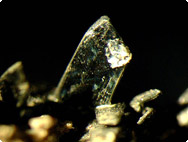A.Vogel search
When the internal search is activated, personal data such as your IP address is transmitted to our search engine Cludo. Data is thus transferred to a third country. Please click here if you want to display the internal search. You can find more information on data protection here: Privacy policy.
Ferrum phosphoricum
Iron Phosphate
History

The word iron is derived from the Celtic-Illyrian word isarno. The Gothic word isarn meant ‘solid metal’ in contrast to soft bronze. It appears to be related to the Latin word ira, which means ‘wrath’, and would thus mean ‘wrathful, powerful metal’. In the sign language customarily used to designate substances in antiquity and in the Middle Ages, iron was represented by an arrow. In 1814, the Swedish chemist Berzelius gave iron the abbreviation Fe, from the Latin ferrum.Phosphoricum is derived from the Greek phósphoros, which means ‘light-bearing’. Phosphorus does not occur in pure form in nature, but always in compounds. Elemental phosphorus is a white, translucent mass, as soft as wax, with a characteristic odour. Freshly-cut surfaces are yellowish. Exposed to the air, it oxidises slowly to phosphorus pentoxide, accompanied by chemiluminescence (light generated by chemical processes, also known as phosphorescence) and the generation of heat. Above 50°C, phosphorus combusts spontaneously, so it is stored under water. There are at least three allotropic modifications, each with its own colour. Phosphorus, symbolised on the Periodic Table by P, was discovered in Hamburg in 1669 by the alchemist Hennig Brand whilst distilling urine mixed with sand and was recognised by Lavoisier as an element. Ferrum phosphoricum is one of the 12 original tissue or function salts in the biochemical method of treatment developed by the homoeopathic doctor, Wilhelm Schüssler between 1872 and 1898.
Physical Characteristics
Iron phosphate is a yellow-whitish, tasteless, water-insoluble powder with the molecular formula FePO4 and a molecular weight of 222.88.
Occurrence
Iron is probably the earth's most common element and occurs in many granite and sedimentary rocks. Due to its high ability to react, phosphorus is never found in pure, elemental form, but almost solely in the form of stable phosphates such as apatite, phosphorite, etc.
Preparation
Iron phosphate is produced by pouring together 10 units of weight of a 1% solution of iron chloride, 10 units of a 1% solution of sodium phosphate, and 20 units of water. The resulting precipitate is washed until the runoff no longer becomes cloudy with silver nitrate solution. Then it is dried at room temperature on clay plates.The homoeopathic potencies are produced in accordance with the current Homöopathisches Arzneibuch (HAB) (New Official German Homoeopathic Pharmacopoeia) by means of trituration using lactose. Fluid potencies are dynamised by being shaken by hand.
Reviews
15.12.2019
“Informative and helpful information about the mineral Iron (Ferrum phosphoricum).”
Rose
A.Vogel Blog – Natural and Healthy
Inspiration for a healthy life!



